技術記事
-
自動車電子機器における高性能マイクの設計と応用解析:ハンズフリー通信からアクティブノイズキャンセリングシステムまで
自動車の先進電子技術がますます発達するにつれ、車載可能な製品も増加しており、中でもマイクの応用が最も広範である。以下に代表的な応用例を列挙する: (Fig.A)
- ハンズフリー通話
- マルチゾーンハンズフリー通話
- E-call
- ドライブレコーダー
- ANC
- 音声認識操作
- 車外モニタリングマイク

図A 自動車用マイクの応用
- ハンズフリー通話:
ハンズフリー通話システムは、自動車に導入された最も初期のマイク応用の一つである。マイクは主に二種類の指向性構造を採用している。一つは単指向性マイクで、小型かつ低コストという利点を持つが、アレイマイク構造と比較すると指向性角度が広く、不要な雑音を多く拾いやすい。もう一つはマイクアレイ方式で、このタイプは通常2つの全指向性マイクを使用し、アレイマイクアルゴリズムによって約60度の指向角を持つ集音領域を形成します。これにより周囲のノイズを効果的に低減でき、さらに高度なモデルではボイストラッキング機能(音声追跡)を備え、運転席か助手席かの話者方向を識別し、その方向の音声を強調することで通信品質をさらに向上させます。図1参照
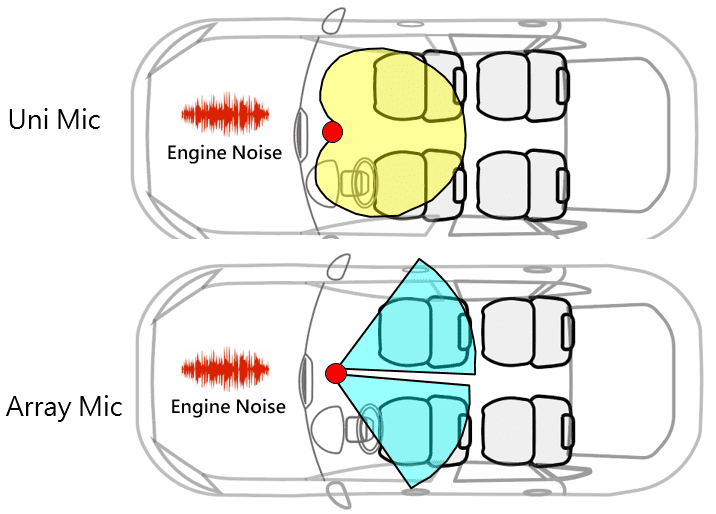
図1 運転者ハンズフリー通信
2. マルチゾーンハンズフリー通信
ハンズフリー通信は当初主に運転席向けに設計されていましたが、現在では全乗客の通信を可能にするマルチゾーンハンズフリー通信アーキテクチャが採用されています。運転席用マイクに加え、乗客席エリアにもマイク集音装置を設置。大型車種では第三列シートにもマイク集音装置を設置可能です。
これにより、全乗客が最高のハンズフリー通信品質を享受でき、システムは話者位置を自動検知。該当マイク群のゲインを自動増幅し、非通話エリアのノイズ源を減衰させるため、通信ノイズ低減に加え、車内マイクとスピーカーによるエコーを大幅に低減。図2a及び 2b.
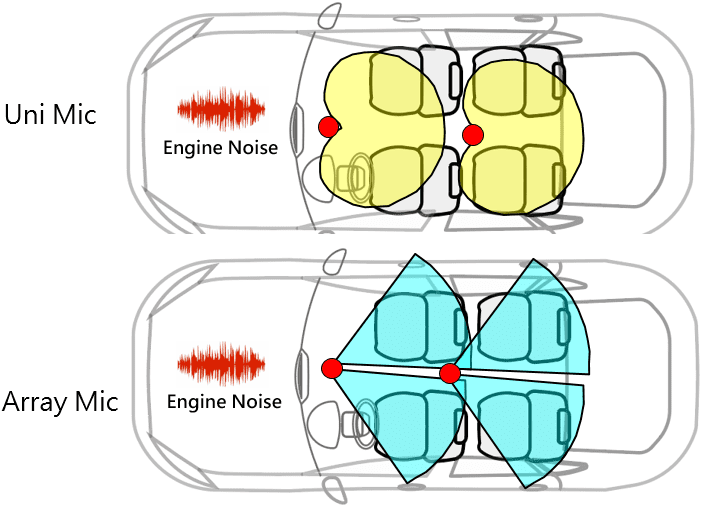
Fig.2a マルチゾーンハンズフリー通信
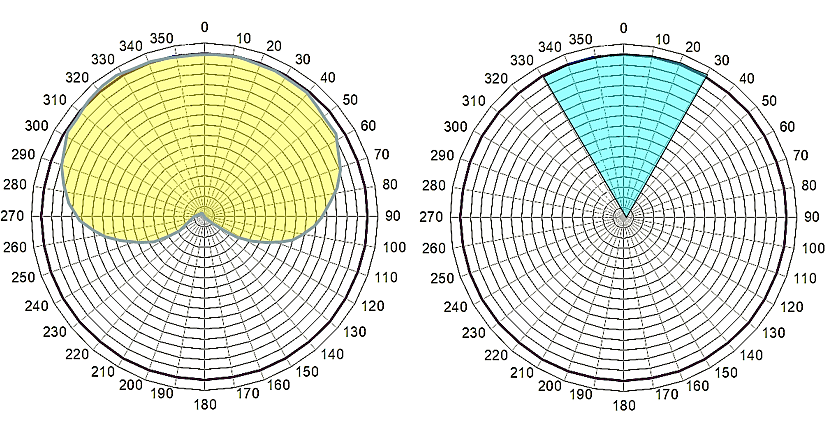
Fig.2b 単指向性マイクとアレイマイクの指向性パターン比較
3. E-call 車載緊急通報システム:
多くの国では自動車用E-callシステムを義務化しており、車両出荷時にE-callシステムの搭載が必須となっている。これにより、緊急事態発生時に乗員が直ちに走行支援センターへ救助要請を行い、人的被害を軽減できる。
E-callは通常、マイク・スピーカー・DSPで構成される小型通信システムであり、車両事故発生時に自動起動する。運転者または乗客が直接対話することで、僻地であっても直ちに走行サービスセンターの担当者と連絡を取り、救助内容を伝達できる。これにより緊急救護要員の現場到着が促進される。この種のマイク感度とS/N比の仕様は通常、比較的高く設定される必要がある。感度は一般的に-25~-32dBV、S/N比は65dBA以上が求められ、遠距離での音声受信品質を確保する。図3参照
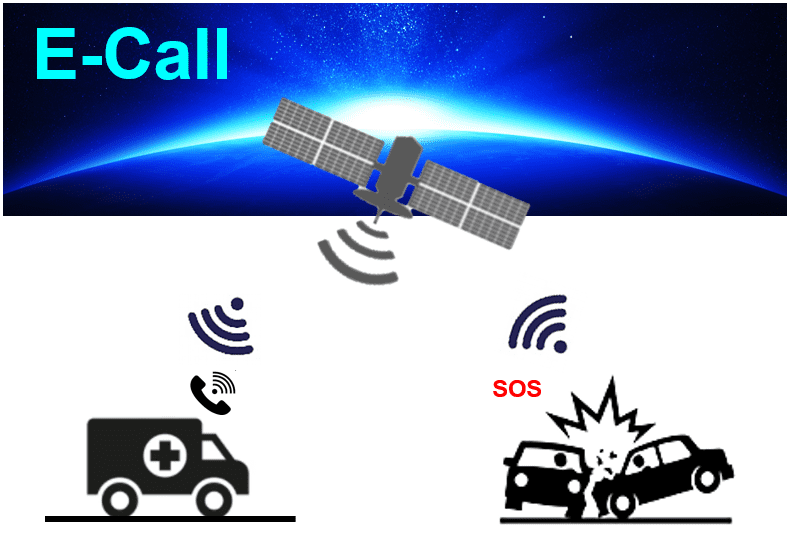
図3 E-call 車載緊急通報システム
4 ドライブレコーダー:
車載ドライブレコーダーは現在成熟した普及製品であり、内部に音声記録装置としてマイクを搭載している。集音方向が特定されないため、主に全指向性マイクが使用される。後部ドライブレコーダーを装備する車種もあり、マイクが車外に設置される場合はIPX6またはIP6K9Kの防水機能が必要となる(図4参照)。
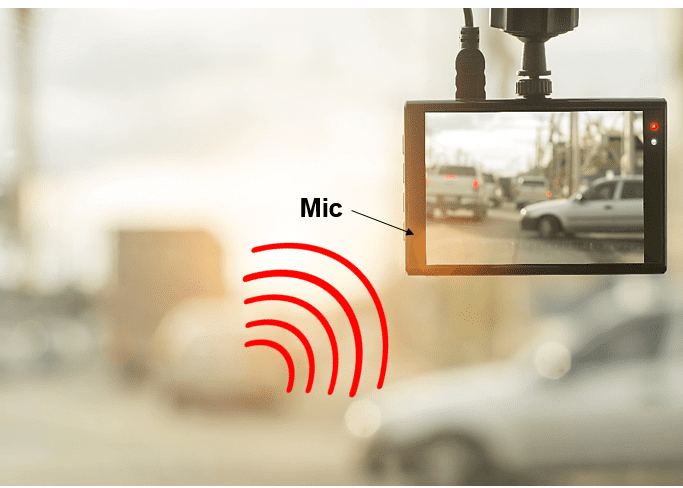
図4 ドライブレコーダー
5. 車内アクティブノイズキャンセリング(ANC):
走行中の自動車では、エンジン騒音に加え、タイヤと路面との摩擦騒音/車外からの風切り騒音/車体共振騒音などが発生し、これらは運転者や乗客の快適性を低下させます。従来の自動車では、厚い防音・防振材を用いて騒音低減を図ってきましたが、これにより車重の増加や乗車空間の減少という課題が生じていました。現在、より新しい技術としてANCが採用されています。これはマイクで騒音源を拾い、DSP処理により車内スピーカーで逆位相信号を再生し、騒音相殺を実現するものです。この種のアプリケーションでは、マイクの位相精度(<±5∘)とSNRは65dBA以上、周波数特性(Fr)は10Hzまで平坦であることが必要で、これにより効果的な騒音低減が可能となる。乗員はより優れた音楽再生品質と通話品質を享受できる。図5参照
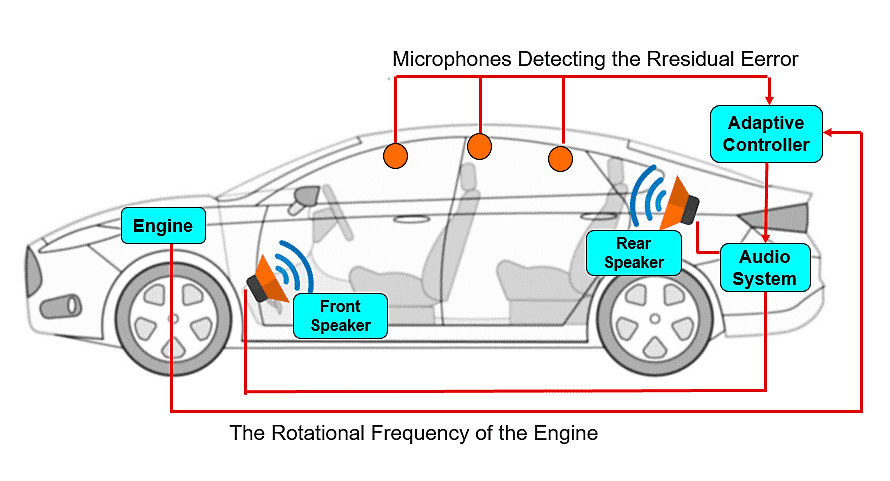
図5 車内アクティブノイズキャンセリング(ANC)
6. 車載音声認識:
運転安全性を考慮し、従来の手動操作インターフェースは音声認識操作に徐々に置き換えられている。主にマイクで運転者の音声指令を拾い、インターフェース指令に変換して操作を実現する。代表的な装置はGPSナビゲーション/オーディオシステムなど。
認識率向上のため、マイクには通常アレイマイク構造が採用され、環境ノイズを効果的に除去することでインターフェース操作の正確性を高める。マイクには位相一致性と高SNR特性が求められる。図6参照
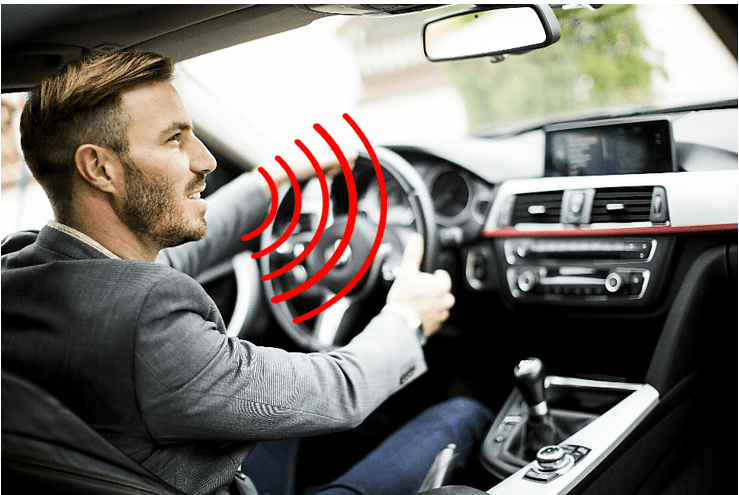
図6. 車載音声認識
7. 車外監視マイク(緊急事態用):
自動車の防振技術向上に伴い車内騒音は大幅に低減したため、車外環境の緊急音はかえって聞き取りにくくなっています。安全面から、車外にマイクを設置して環境音を収集し、DSP演算分析により意味のある音を抽出して増幅することで、運転者に車外の突発事態を知らせ、適切な対応を促し事故を防止します。
この応用マイクは車外に設置されるため、IP6K9K規格が必要であり、蒸気洗浄車でもマイク特性が損なわれないことを保証する。図7参照
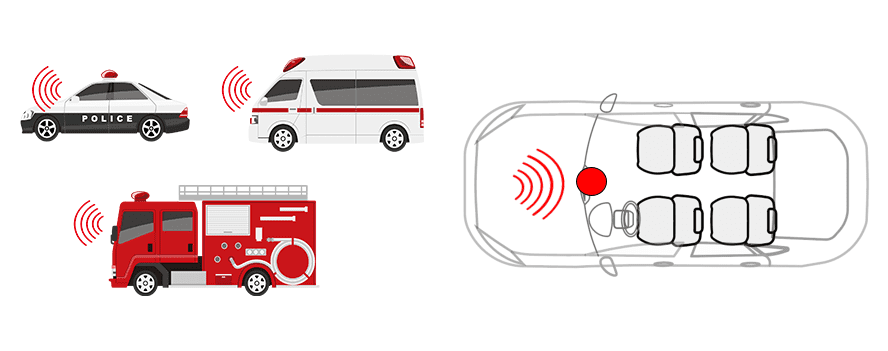
図7 車外監視用マイク(緊急事態対応用)
当サイトの一部の文章は、AI翻訳により訳されたものです。内容の正確性については、原文の中国語版をご参照いただくか、弊社までお問い合わせください。ご理解のほど、よろしくお願いいたします。

 RFQ
RFQ